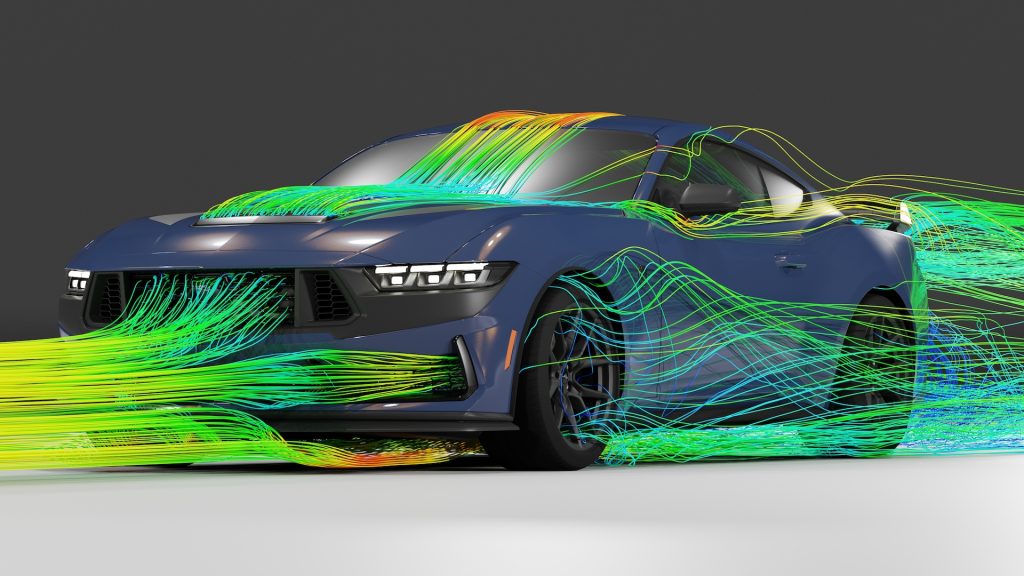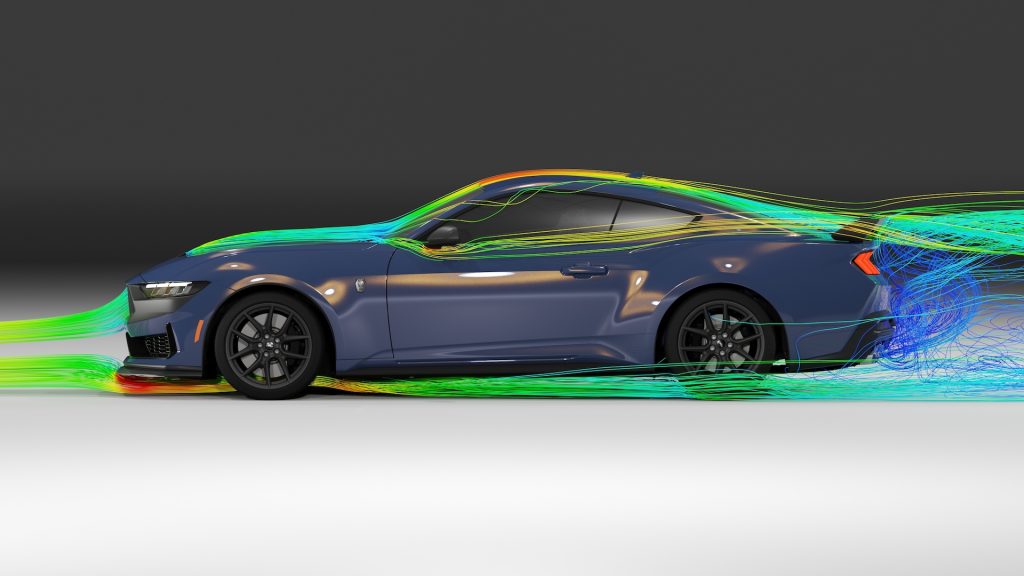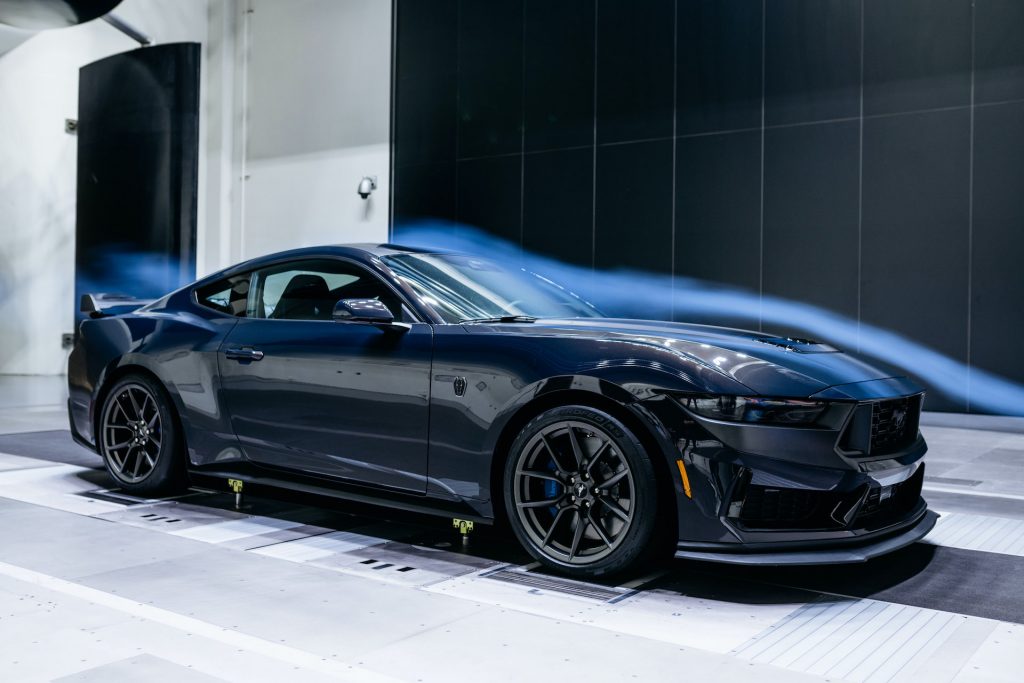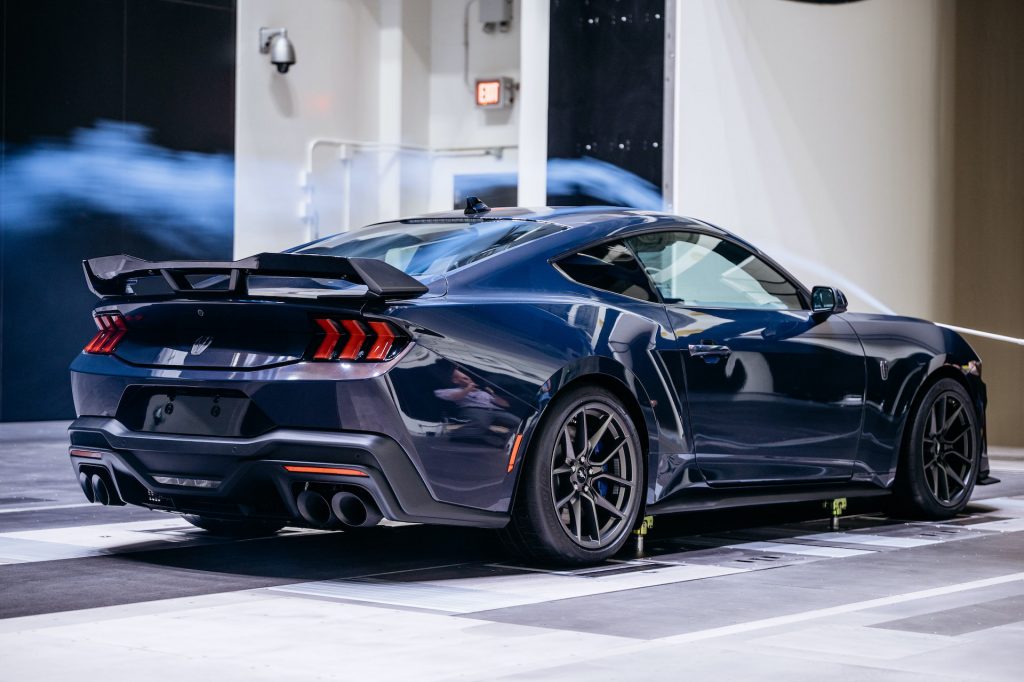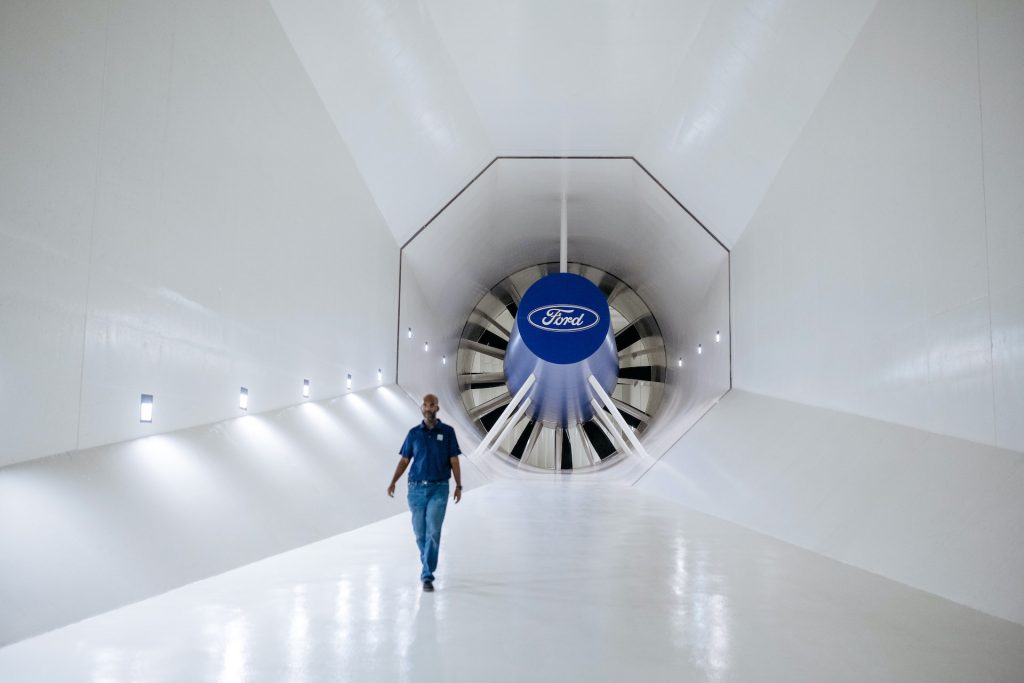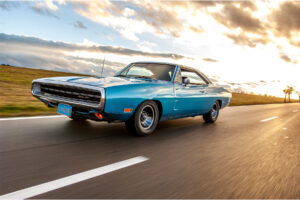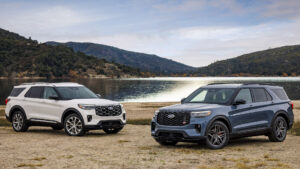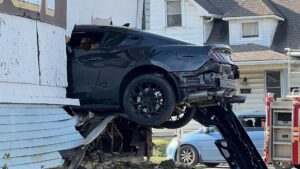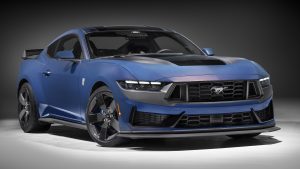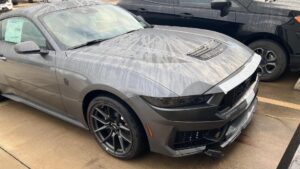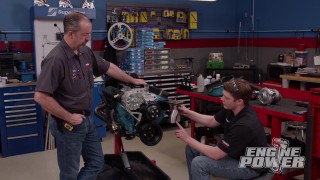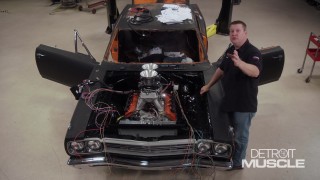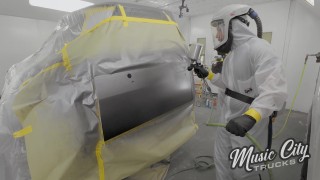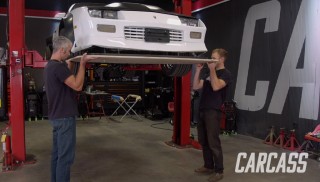Watch The New Ford Mustang Dark Horse Breeze Through a 200 MPH Wind Tunnel

As exciting as the muscle car world is to see the 2024 Ford Mustang hit the market, sometimes it is intriguing to gaze behind the curtain to see how this next-gen model came to be. Because a lot goes into the design and production of a car besides sketches, clay sculptures, data analysis, and board meetings.
This is where the iconic wind tunnel comes into play. As part of the R&D process, automakers have used wind tunnels to design, test, and analyze the aerodynamics and energy efficiency of new vehicles before they enter production. For the 2024 Ford Mustang Dark Horse, the company stationed the car on a vehicle-sized treadmill while in the pathway of one of the most advanced wind tunnels to date.
What Is A Wind Tunnel Used For?
The Rolling Road Wind Tunnel (RRWT) is able to simulate wind and road surface speeds of 200 mph and is used to test the efficiency of some of Ford’s more high-performance models, which includes the 2024 Ford Mustang, as well as its line of electric, hybrid, and gas-powered vehicles. How powerful is it exactly? “The amount of air moved by our wind tunnel is enough to fill a K-Class blimp in just over 5 seconds,” says John Toth, North America Wind Tunnels Engineering Supervisor in a press release.
How Does The RRWT Work?
One of the main variables of the RRWT is meant to help determine the most accurate measurements of wind drag and downforce of a vehicle, which are essential to maximizing its range and efficiency. Ford also uses this wind tunnel to replicate open-road driving conditions in an effort to cut down on design costs, as well as time to create the finalized model.
“The closer we can get to reality in the lab, the better and faster we can create more energy efficient vehicles with great on-road and track stability,” says Toth. “Testing while the wheels and tires move is instrumental to improving aerodynamics for track-ready vehicles, like Mustang Dark Horse which has to balance both aerodynamic drags and downforce.”
The RRWT also utilizes a five-belt rolling road system to simulate real-life drag through the wind tunnel in a controlled environment. This means that each wheel gets its own belt, leaving a larger fifth belt that runs down the middle of the vehicle. The operators use a crane to switch from the five belt and single belt systems, which are capable to running up to 200 mph. Thus, opening the door for more high-performance vehicles to be developed.
